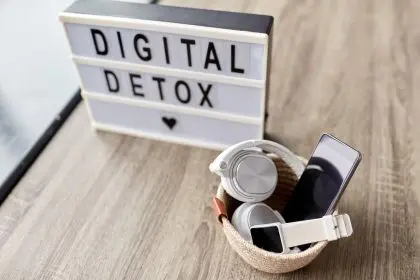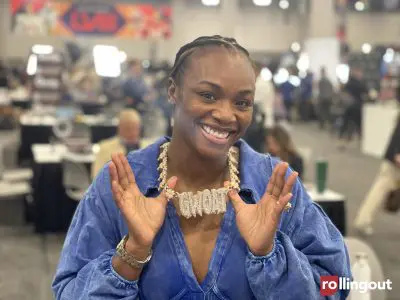When those memories pop up on your phone, learn to appreciate your journey instead of falling into the comparison trap
Looking at old photos can trigger a complex wave of emotions. That picture from 10 years ago might bring a smile to your face as you remember good times, but it can also lead to uncomfortable feelings when you notice how your body has changed. For many people in their 30s and beyond, these digital reminders become painful evidence of youth and bodies long gone, creating a cycle of self-criticism that’s difficult to break.
This phenomenon has only intensified in our digital age, where memories resurface automatically through phone apps and social media. What should be nostalgic moments often transform into harsh self-evaluation sessions, leaving many wondering how to appreciate their current bodies rather than mourning what once was.
The science behind our body image struggles
Our perceptions about our bodies form early and run deep. Beauty standards promoted across media platforms consistently present thinness as the ultimate goal, suggesting that smaller bodies equate to greater happiness, success, and worthiness. These messages become internalized, creating a framework through which we judge ourselves years later.
Research shows that our brain creates strong connections between physical appearance and self-worth during formative years. These neural pathways become difficult to rewire, which explains why seeing an old photo of yourself at a smaller size can trigger immediate feelings of inadequacy, regardless of all you’ve accomplished since then.
The psychological impact runs deeper than mere vanity. Our brain processes these comparisons as actual threats, activating stress responses that affect mental health. This biological reaction explains why these comparisons feel so painful rather than motivational.
The hidden toll of living in the past
Fixating on past versions of yourself extracts a heavy price from your present happiness. When energy focuses on recapturing a former appearance, it diverts attention from appreciating current strengths, accomplishments, and experiences that truly matter.
This preoccupation with returning to a previous body size often leads to:
- Diminished enjoyment of current pleasures and experiences
- Increased likelihood of attempting extreme dieting methods
- Higher levels of cortisol, the stress hormone linked to various health problems
- Reduced motivation for sustainable health habits
- Strained relationships as self-criticism impacts how you interact with others
The pursuit of recapturing youth often becomes cyclical—the more someone focuses on past appearances, the more discontent grows with the present, creating patterns that can spiral into clinical issues like depression, anxiety, and disordered eating behaviors.
5 transformative strategies to embrace your current body
Breaking free from the comparison trap requires intention and practice. These approaches help redirect thinking patterns that keep you locked in self-criticism:
Create a gratitude practice for your body
Instead of focusing on appearance, build daily acknowledgment of what your body accomplishes. Your body carries you through life, enables you to experience joy, and demonstrates remarkable resilience. Physical capabilities deserve celebration whether that means appreciating your strength during a workout, recognizing how your body has recovered from illness, or acknowledging the comfort your embrace provides loved ones.
Try keeping a body gratitude journal where you write three things your body did for you each day, completely unrelated to how it looks. This practice gradually shifts perspective from appearance-based worth to function-based appreciation.
Transform your inner dialogue
The ongoing conversation you have with yourself shapes your reality more than external feedback. Monitor how you speak to yourself when confronting those old photos or catching your reflection. Most people would never speak to friends the way they criticize themselves.
Develop awareness of negative thought patterns by pausing whenever you make comparisons. Challenge these thoughts by asking what you would say to someone you care about in the same situation. Then offer yourself the same compassion.
Practice reframing statements from “I looked so much better then” to “My body has carried me through important life experiences since then” to acknowledge your journey without judgment.
Reset your digital environment
Technology contributes significantly to comparison problems but can also offer solutions. Consider taking these actions:
Taking breaks from social media platforms that trigger comparison thoughts gives your brain space to develop healthier perspectives. Use this time to engage with content specifically focused on body neutrality and diverse body representation.
Manage memory notifications on your devices by turning off features that automatically display images from years past if these create distress. Alternatively, use these moments as opportunities to practice your new reframing skills.
Curate your social feeds to include diverse body types, ages, and abilities. Exposure to varied representations of beauty helps counteract narrow standards that fuel comparison.
Prioritize health markers beyond appearance
Shifting focus from how your body looks to how it functions creates sustainable motivation for healthy choices. Work with healthcare providers to identify meaningful health goals based on measurable factors like energy levels, sleep quality, strength improvements, or emotional wellbeing.
Consider tracking non-appearance measures of progress such as: How much stronger you feel during physical activities; Improvements in flexibility or balance; Better recovery times after exertion; Enhanced mood stability throughout the day and; More consistent energy levels
This approach naturally promotes behaviors that genuinely support wellbeing rather than drastic measures aimed solely at changing appearance.
Build supportive connections
The people surrounding you significantly impact your relationship with your body. Spend time with individuals who discuss bodies respectfully and focus on more meaningful aspects of life.
Consider joining communities dedicated to body acceptance where members share experiences and strategies for overcoming comparison struggles. These spaces provide validation that you’re not alone in these challenges.
When possible, discuss your journey with trusted friends who can gently redirect negative self-talk and celebrate your non-appearance-based achievements.
Finding peace with your evolving body
Learning to appreciate your current body doesn’t happen overnight. The body you have now tells the story of your life experiences—perhaps including pregnancy, career achievements requiring long hours, health challenges overcome, or joyful celebrations around dinner tables with loved ones.
Bodies naturally change throughout life, serving different purposes and reflecting different priorities across decades. Rather than viewing these changes as decline, they can be reframed as evidence of a life fully lived.
The journey toward body acceptance involves recognizing that appearance represents just one small aspect of your worth. As you practice these strategies, moments of comparison will likely still occur. The difference comes in how quickly you can return to appreciating your present self, with all its complexity and capability.
With consistent practice, those old photos transform from sources of regret to appreciation for your entire journey—physical changes included. The freedom found in accepting your current body opens space for deeper joy, authentic connections, and meaningful pursuits that truly define a life well-lived.
















